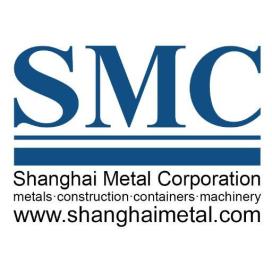Aluminum is widely known for its extensive use for kitchen utensils, exterior building siding and varying industrial applications. More sophisticated uses of aluminum can be found in Navy, more specifically in solid rocket propellants. The use of aluminized propellants for rockets dates back to the early 1950s, and research proved to be a vital breakthrough that made the Navy’s missile submarines practical.
 Today, aluminum still remains a main ingredient in many tactical missiles and space-launch platforms, including NASA’s next generation Ares rockets. The most common type of aluminum used in solid propellant formulations is powdered spherical aluminum 5 to 60 mm in diameter and usually constitutes 14% to 20% of the propellant by weight.
Today, aluminum still remains a main ingredient in many tactical missiles and space-launch platforms, including NASA’s next generation Ares rockets. The most common type of aluminum used in solid propellant formulations is powdered spherical aluminum 5 to 60 mm in diameter and usually constitutes 14% to 20% of the propellant by weight.

The aluminum burning at extreme temperatures represents just one part of the ALICE equation. The other includes the oxygen and hydrogen locked within water molecules that help feed the aluminum combustion. That reaction produces products in the form of hydrogen gas and aluminum oxide, which may prove greener than existing rockets. Current space shuttle flights release about 230 tons of hydrochloric acid in the exhaust left behind by their solid rocket boosters.
But a new mixture of nano-aluminum powder and frozen water, known as ALICE, could make rocket launches more environmentally friendly, and even allow spacecraft to refuel at distant locations such as the moon or Mars. Unlike the solid propellant aluminum that ignites when temperature are higher than 6.920 degrees Fahrenheit, forcing gases out to propel rockets upward, ALICE gets its kick from a chemical reaction between water and aluminum. ALICE squeezes even more out of the aluminum by using nano-scale particles with diameters of 80 nanometers, or 500 times smaller than the width of a human hair. Such tiny particles combust more rapidly than larger particles to give an additional kick, and may allow easier control over a rocket’s thrust.
Creating the proper mix of ALICE propellant proved tricky, but the researchers ended up with slurry that some describe as being like toothpaste. And the freezing helped keep the propellant intact during the first test launch, as well as prevent any premature aluminum-ice reactions caused by accidental sparks, or slow oxidation from occurring.
Research goes further. Perhaps the most immediate idea involves mixing nano-aluminum with larger aluminum particles. That could allow more efficient use of the aluminum, and cut back on the amount of wasted aluminum oxide in the initial aluminum. The researchers are also working with more energetic aluminum-water mixtures as they initially chose a mixture with extra ice to err on the safe side. Their caution came at the cost of lower exhaust gas temperatures during launch, which translated into lower performance and less hydrogen produced. Future work might even look at creating gelled propellant that behaves like liquid fuel. New mixtures could also produce more hydrogen, and take a step closer to helping run hydrogen fuel cells.
Shanghai Metal Corporation offers aluminum is varying types including sheet, plate, coil, strip, plate, tube, pipe, in varying fittings and sizes. SMC also produces aluminum profile for radiator, motor shell, and furniture. For further information on copper material, please visit our website. Also, be sure to join the conversation in our LinkedIn group, Facebook and Twitter. Try our new mobile add by scanning the QR code below:
#BuildingValueAcrossTheGlobe
Source & Pictures: Aerospaceweb.org, Livescience.com
Camilla G.//SMC Editor











